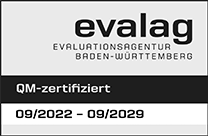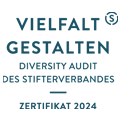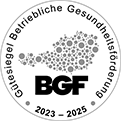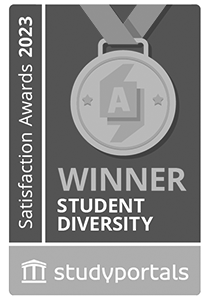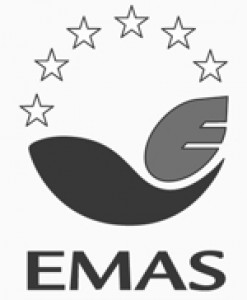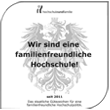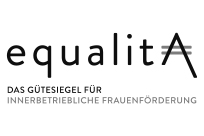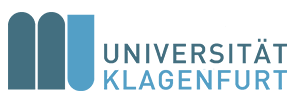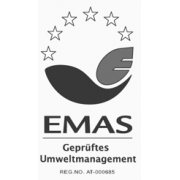Master’s Specialization Human-Computer Interaction
Starting with winter semester 2019, University of Klagenfurt offers a new Master’s degree program in informatics. The program is taught in English. It allows you to specialize in one of eight areas of informatics. One of these specialization areas is Human-
If you are interested in specializing in Human-
We very much welcome graduates from the Bachelor’s degree program at our university and incoming students from other universities in Austria or world-
Human-
Currently, the core of our our specialization in Human-
User Experience Engineering
ECTS: 4
Course type: Lecture with workshop
Offered in: Winter Semester
Recommended semester: 1 or 3
Teacher: Gerhard Leitner
In this course you will deepen your knowledge in usability and acquire practical skills in user experience engineering (the course builds on theoretical basics typically covered in introductory courses in Human-
Togehter with a group of fellow students, you will first conceptualise and plan a ‘digital tool’ which solves a common everyday problem (such as “I always forget where on my PC I’ve stored this and that digital photo – could there be a solution to support me?”). In an iterative process – within which the involvement of potential users is of central importance – your group then develops, evaluates, and optimizes a prototype of your intended solution.
What you learn and practice in this course will help you to appropriately integrate usability engineering and user experience engineering methods in your future projects, a prerequisite for successful IT development.
Mobile Human-
ECTS: 4
Course type: Lecture with workshop
Offered in: Summer Semester
Recommended semester: 2
Teacher: Gerhard Leitner
Mobile devices are not just smaller desktop computers, but distinct tools which are designed for specific purposes and are used in other contexts than desktop computers. Despite the difference to the conventional desktop computer, mobile devices or, more concretely, their software and user interfaces are often designed according to conventional interaction concepts and faulty assumptions about the usage situations (such as that the user is fully focused on only one activity or task and working in a stable or stationary position). This is likely to result in an unsatisfactory user experience for the user. Accordingly, to avoid such suboptimal outcomes in your future projects, in this course you will learn how to:
- evaluate differences in the context of use,
- analyse the potentials of various input and output modalities (such as speech and gestures),
- apply the acquired knowledge in prototypical interface solutions for mobile devices, and
- evaluate the solutions with appropriate methods.
Experiments in Human-Computer Interaction
ECTS: 4
Course type: Lecture with workshop
Offered in: Summer Semester
Recommended semester: 2
Teacher: David Ahlström
Human-
- empirical research in HCI (research motivation and questions),
- experiment terminology and experiment design considerations,
- quality of experiments (internal/
external validity, repeatability), and - conducting experiments and data analysis (hypothesis testing / inference statistics)
Based on one or two example projects, we will together discuss and practice the main activities behind HCI-
Seminar in Human-
ECTS: 4
Course type: Seminar
Offered in: Summer Semester or Winter Semester
Pre-requisites: Seminar Scientific Writing
Recommended semester: 2 or 3
Teacher: Martin Hitz
Next Opportunity: Winter Semester 2023
Each year we select a new general theme for the seminar. As a participant, you will – typically – select and focus on one aspect of the general theme and first practice how to search for, read, and understand related scientific publications. In a second phase, you will practice how to summarize, present, and critically discuss the relevant scientific work you have found (by writing a seminar paper and by orally presenting your paper). The seminar typically follows the main steps necessary when contributing to a scientific conference.
Most of the final semester of your Master’s studies you will devote to your Master’s project. We recommend that you start looking for potential thesis topics that you find interesting and that you discuss these topics with one of us (David Ahlström, Martin Hitz, or Gerhard Leitner) already during the first half of the semester before your thesis-semester. Having settled on a topic before the thesis-semester starts will give you a valuable speedy start!
Further below you will find information about suitable thesis topics and additional details about writing your Master’s thesis in our specialization Human-
When you start working on your Master’s project you will also join our Research Seminar (which often goes under its German name, Privatissimum).
Research Seminar (Privatissimum)
ECTS: 2
Course type: Seminar
Offerend in: Summer and Winter Semester
Rec. Semester: 3 and 4
Teacher: David Ahlström, Martin Hitz, and Gerhard Leitner.
The seminar also serves to pass on experiences and knowledge among the participants and to jointly find and discuss answers and solutions to questions and problems related to the ongoing projects.
Typically, during the course of a semester we will focus on your work in two or three of our seminar sessions. For these occasions we will ask you to provide an overview of your project, to report on the current progress, and to prepare a presentation about any aspecs of your project that you like to thematize and discuss in more detail.
Please do not hesitate to contact David Ahlström if you have any questions or need further information about our specialization in Human-
The last semster of you Master’s studies you will spend working on your Master’s project. One of us, David Ahlström, Martin Hitz, or Gerhard Leitner, will be your supervisor and advice you throughout the project.
With your Master’s project you will demonstrate that you possess the necessary knowledge and skills to approach and solve a research problem or question within the field of Human-
Finding a Topic
Please step back for a moment and think of the courses you have completed during your Bachelor’s studies. The more you found the topic covered in a course fun and interesting, the easier it was to complete the course with a good grade, right? Similary, the more enthusiastic you are about the topic of your thesis, the more you will enjoy working on your Master’s project – and the faster you will finish! Since you will need to work very focussed on your project for a longer period of time, do make yourself a favor and choose a topic that you find interesting.
Accrodingly, we recommend that you start thinking about possible topics that you might like. Do this well ahead in time. Ideally, you start to work on finding a topic at least three months before the beginning of the semester you have reserved for your Master’s project.
What To Do?
- Think about interesting issues related to Human-
Computer Interaction that you have encountered in the courses you have already finished. - Get inspiration from previous Master’s projects that we have supervised (for examples see below, search the university library, ask us). This will give you a general impression of what direction your future project can take.
- Take a look at the open Master’s projects listed below. Perhaps one or two seem interesting to you!
- Do not hesitate to contact us so that we can discuss and find a suitable project for you!
When we have agreed on a topic you need to ‘register’ your thesis-
Now the work can start. To give you an initial idea about your upcoming work, what you will be doing, and how your work will be structured, think about your Master’s project as being divided into three rough phases:
Phase 1: Orienting Yourself
Usually, in the first phase of your project your main goal is to familiarize yourself with your topic. This typically includes both frequently discussing with your supervisor about the topic and reading about the topic. Doing so you learn what other people have already done in your topic area. Having a good overview of the topic area is important. This helps when it comes to narrowing down your topic into a concrete research question (sometimes it is also called a research problem). A research question is often quite limited. The goal with your project is to find the answer to this question (or finding a solution if you call it a research problem).
Having a suitable and interesting research question, the next step is often to search the research literature in a more focussed way to find out what other people have done to tackle questions similar to your research question. This gives you a good idea about how others have approached related research questions. What methods have they used to find their answers? How have they described their answers, and – importantly – what answers do they provide?
What you have learned in this phase of your Master’s project about your topic and about how to approach research questions similar to yours typically ends up in an ‘Introduction’ chapter and in a ‘Related Work’ chapter in your Master’s thesis. In these chapters you will set the stage for the rest of your thesis. In these chapters you will:
- explain your research question and motivate why it is important to try to find the answer,
- outline how you intend to tackle your research question and justify your approach, and
- summarize your literature studies to introduce your readers to your topic and to convince them that your question has not been answered before.
Phase 2: Tackling the Question
The second phase of your Master’s project is the main phase. Here you tackle your research question by doing what you need to do to find its answer! Obviously, which exact activities are included in this phase heavily depend on your research question and what is needed to find its answer. Thus, the activities vary from project to project. But in general, if you choose to do a Master’s project in our Human-Computer Interaction specialization in this phase of your project you will most probably do a subset of the following:
- design and build a piece of software (desktop, mobile, other)
- create various user interface prototypes (desktop, mobile, other)
- collect opinions from people (using interviews, a questionnaire, or a focus group)
- collect user data (using a usability study or a controlled user experiment)
- analyse collected information and/or data
- compile your findings into convincing presentations
Your activities and what you have learned – that is, the answer to your research question – in this phase of your Master’s project you will most probably present in a series of chapters in your Master’s thesis. Typically, first a chapter devoted to your software and a chapter where you describe your data collection method. These chapters are typically followed by an ‘Analysis’ chapter and a ‘Results’ chapter where you report on how you analysed your data and how you interpret the results.
Phase 3: Reflecting on Your Work
In this phase you will primarily critically reflect on the outcome of the previous phase (the answer…) and on what you have done. Was the outcome of your previous activities as you expected? Where there any surprizes, and why? What implications do your findings have, and what can other people learn from reading about your efforts? How can they ‘use’ your answer to the research question? Why does it matter? These are all very important and purposeful questions. And in the end of your project you will have the answers! Your reflection and discussion typically ends up in a chapter named ‘Discussion’.
Finally, it is likely that throughout your work some other new questions related to your topic will pop up. Such issues you would typically air in a chapter called ‘Future Work’. Who knows, perhaps one of the questions is suitable for one of your fellow students to cover in a Master’s project the following year!
In practice, these three phases normally overlap. And you most probably will work on several issues and activities in parallel, in an iterative way. The exact process also vary from project to project. Accordingly, it is difficult to provide exact numbers regarding the time you will spend on different activities, such as programming, reading, and writing. However, the numbers below can serve as a rough estimation.
The thesis itself will be typically 60–80 pages long, but should not exceed 100 pages. When you have finished writing your thesis and you and your supervisor agree that your project is finished, you need to officially flag your Master’s thesis as being completed. You do this by uploading your thesis document in the Campus-system following the procedure described here. If you are also finished with all your courses, it is also time to register for the final examination (see below).
Open Master Theses Projects in Human-
Currently, we are particularly interested in working with you on one the following Master’s projects.
CursorRec: A Recording Software to Track and Save Cursor Event Data
Contact: David Ahlström
Technologies & Tools: Python or Java
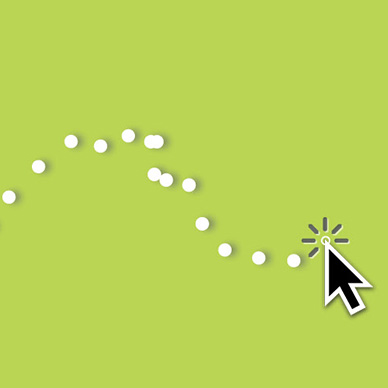
This project first aims to create a recording software that runs unobtrusively in the background on a desktop computer and logs all cursor movements and clicks along with the corresponding spatial and temporal information. When the recording software is ready, the following steps include collecting cursor data from a group of volunteers and conducting a pattern analysis of the recordings.
Vibration-Based Interactions for Desktop Computers
Contact: David Ahlström
Technologies & Tools: Java • Android
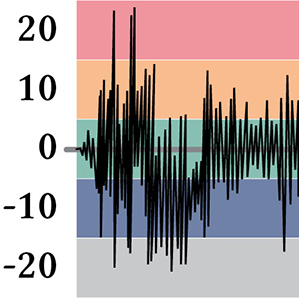
In this project, we will explore augmenting desktop computing with vibration data sampled by an accelerometer in a smartphone positioned on the table next to the keyboard and the mouse. The first step includes identifying and charting out the different vibration patterns that emerge when the user works with the keyboard and the mouse. The second step aims at devising and testing purposeful ways to capitalize on this knowledge.
Typeface Readabilty & Eye-
Contact: David Ahlström
Technologies & Tools: Java • Android • Eye-
![]()
In the graphic design community and in the usability community there is an on-
In this project you will first develop a software package that provides the functionality that is necessary to conduct a user study on readability. This includes functionality to configure different test cases (by defining combinations of various text attributes such as letter size, color, and typeface), functionality to present the different test cases to study participants, and to log the time participants need to read text in the different test cases.
In the second part of this project you will gain insights and experience in conducting user experiments, statistical data analysis, and in using eyetracking technology. Together, we will use your experimental software and conduct one user experiment using our lab’s new eyetracking system from Ergoneers. After that, we will analyse the results from the experiment.
Selection of Moving Screen Targets
Contact: David Ahlström
Technologies & Tools: Java
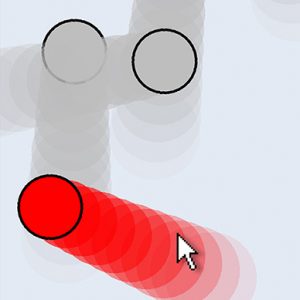
In many applications – such as in air-
A first version of a Java application that provides the necessary functionality to conduct user experiments on selection of moving screen objects has already been developed. You will first extend this application with additional functionality and then design and conduct a user experiment that allows you to 1) verify previously reported research results on the effectiveness of various techniques that support the selection of moving screen objects, and 2) empirically build and verify a predictive performance model that explains how fast users can select moving screen objects.
Accordingly, with this project you have the opportunity to deepen your programming skills (using Swing, Java’s GUI toolkit) and you will gain experience in how to design, conduct, and evaluate user experiments, and in theoretical modelling of user performance.
Evaluating Non-
Contact: David Ahlström
Technologies & Tools: Java • SPSS (for statistical analysis)
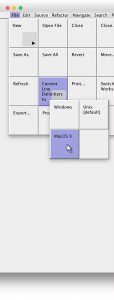
In Human-Computer interaction research – as well as in many other disciplines – new scientific knowledge and technological advances are often based on empirical research where new ideas and theories are explored through hypothesis testing and controlled experiments. However, critical voices within the HCI research community question the value and use of controlled experiments in HCI.
In this project we will contribute to this discussion by redoing – replicating – a series of ‘famous’ user experiments from the HCI literature. We will focus on experiments that have studied the usability of non-
For this purpose, a first version of a ‘menu test suite’ application has been developed. After further development and adaptations we can start replicating previous menu experiments. This includes carefully studying the descriptions of the previous experiments, then running the experiments with a group of computer users, and finally analyzing our results and comparing these with previously reported results.
Accordingly, in this project you will acquire skills and experience in designing, conducting, and evaluating user experiments.
Measuring the Complexity of User Interfaces
Contact: Martin Hitz
The research part of the work consists (at least) of the following steps:
- R1) Find out which data structures describing the UI (such as the Document Object Model DOM) are accessible in various development environments and selecting a prototypical one as the object of interest for the subsequent steps.
- R2) Research into the literature on complexity of UIs and its relationships to usability.
- R3) Identify a possible set of attributes to be measured within the result of Step R1 in order to come up with a set of measures estimating the usability attributes of the interface under study.
Once this step is completed, the following practical tasks need to be completed:
- P1) Build a prototypical measurement tool.
- P2) Correlate the measurements of various UIs (using the result of P1) with subjective and objective usability measurements on these UIs (user tests).
Engineering Voice-Based Conversational Interfaces
Contact: Martin Hitz
The proliferation of voice-based conversational user interfaces is increasing. We all use Alexa, Siri, Hey Google, or specific interfaces such as dialog systems in our car to communicate with smart environments.
The goal of this work is to analyze and compare software development kits (SDKs) for creating custom conversational user interfaces. The result of the study is a guide that addresses questions such as
- What are the advantages and disadvantages of the available SDKs?
- Which system should be used under which circumstances?
- What is required to implement a speech-based conversational user interface with a particular SDK?
The research part of the work consists of (at least) the following steps:
R1) Find out which systems offer SDKs for developing custom conversational user interfaces.
R2) Identify the key characteristics that can be used to differentiate between these systems.
R3) Compare the systems based on these characteristics.
R4) Classify the systems in terms of their suitability for some archetypical sets of requirements.
To demonstrate the practicability of the analyzed systems and to underpin the work related to R3 and R4, a hypothetical conversational interface is to be designed and implemented with all the SDKs under study.
Managing Smart Home Intelligence
Contact: Martin Hitz or Gerhard Leitner
The notion of “smart homes” starts with individual services that replace standard analog activities with their digital counterparts, such as shutting or opening the blinds by remote control or Alexa commands instead of manual performance. Real “smartness”, however, requires the context (situation) dependent interplay of different devices. Examples:
- Turning on the heating should imply shutting the windows.
- When the desired room temperature is higher than the current temperature and the outside air temperature is higher than the room temperature, then the windows should be opened unless nobody is at home.
- Between 6 and 7:30, if somebody opens the door of the sleeping room, the coffee machine in the kitchen should be started.
Smart home systems offer more or less comfortable environments to define such “intelligent behavior”. The goal of this work is to analyze and compare such smart home behavior definition environments (“SHBDE” in what follows). The result of the study is a guide that addresses questions such as
- What are the most relevant SHBDE on the market?
- What is their expressive power?
- How easy are they to use for different user groups (at least: laymen, experts) in terms of ease of formulation, ease of maintenance, and ease of documentation?
The research part of the work consists of (at least) the following steps:
R1) Find out which systems offer non-trivial SHBDEs.
R2) Identify the key characteristics that can be used to differentiate between these systems (Expressive power, ease of use…).
R3) Compare the systems based on these characteristics.
R4) Classify the systems in terms of their suitability for some archetypical sets of requirements.
To demonstrate the practicability of the analyzed systems and to underpin the work related to R3 and R4, several hypothetical use cases are to be designed and implemented with all the SHBDEs under study.
In addition, the question of automatic adaptation to standard rituals arises. Considering the coffee machine example above, it is clear that the exact timing of such rituals varies: The times of getting up, using the bathroom etc. vary (working days, weekends, vacations). Then the system should derive a probability on the basis of individual events (time of day, opening of the bedroom door, operation of the faucet in the bathroom) whether the coffee machine should be switched on or not. That leads to
R5) Design machine learning approaches to allow for automatic adaptation to rituals of the smart home inhabitants.
To get a better idea about what a successful Master’s thesis in our specialization looks like, you can download any of the following theses from the university library.
Demi Dauerer:
Evaluation of Scrolling Techniques for a Mouse with a Touchscreen
Martina Soldo (in German):
Nutzungspotentiale neuer Smart Devices für vernetzte Hausgeräte
Martin Gratzer:
3MF: A Service-Oriented Mobile Multimodal Interaction Framework
Anton J. Fercher:
Pervasive Visualization of Energy Consumption
Bonifaz Kaufmann:
Design and Implementation of a Toolkit for the Rapid Prototyping of Mobile Ubiquitous Computing
The Master’s degree program in informatics at University of Klagenfurt is a four-semester long program (120 ECTS points). Courses in the program are taught in English. The program has a focus on applied informatics and the aim is to qualify graduates for the top-
The Master’s degree program in informatics at University of Klagenfurt is structured in six blocks, as follows.
Block Required Subjects • 34 ECTS
This block contains two categories: informatic courses (22 ECTS points) and non-
Reflecting on the Limits of Formal Sciences • lecture w. workshop • 4 ECTS • rec. semester: 3
or
a course from the elective program Feminist Science/
Block Elective Subjects • 32 ECTS
In this block you will select and complete a total of 32 ECTS points from the eight fields listed below. At least 16 of these 32 ECTS points need to be from one and the same field – this field is called your ‘specialization’.
You can chose from:
If you chose to specialize in Human-
If you chose to specialize in Human-
Block Project or Supplementary Subjects • 18 ECTS
Depending on your earlier studies and previous experiences, in this block (18 ECTS) you will either complete an internship in a research group at the university or an internship at a software company – see Study Variant I below – or you will complete a set of supplementary computer science courses – see Study Variant II below.
If you have already completed an internship during your Bachelor studies you have to go with Study Variant II, if you did not do an internship you can choose between Study Variant I and Study Variant II.
The project variant of this block consists of either making an internship at one of the computer science research groups at the university to work on a research project or to make an internship at a software company. Opting for doing an internship at our research group (Interactive Systems) is likely the best choice for you to do in this block if you are interested in gaining deep insights and skills in Human-
After the internship (17 ECTS) is completed, you will write a project report and also present and discuss your project and your experiences in the course Review of Students’ Internships (German: Projektübergreifende Aufarbeitung; 1 ECTS).
If you are interested in doing your internship at our research group in a project related to Human-
The supplementary subjects variant of this block consists of completing 18 ECTS points among the mandatory courses and the elective courses offered in the Applied Informatics Bachelor’s program.
The intention with the supplementary courses is to give you the opportunity to visit courses from the Bachelor-level to obtain introductory knowledge and skills which may be helpful (or even necessary) for the Master-level courses you select in block Elective Subjects (see the previous block).
Accordingly, if you intend to take courses in our Human-
- Visual Design for Interactive Systems (German: Visuelle Gestaltung Interaktiver Systeme), 4 ECTS (lecture w. practical part)
- Methods and Practices for Interactive Systems (German: Entwicklungsmethoden für Interaktive Systeme), 4 ECTS (lecture w. practical part)
- Interactive Systems II, 4 ECTS (lecture w. practical part)
we recommend that you select at least two of these Bachelor-level courses in this block.
If you have already completed these courses, we encourage you to select among the Bachelor courses listed below. All of the listed courses cover topics relevant and useful to Human-
Priority I
- App Development, 2 ECTS (lecture) + 4 ECTS (practical course)
- Multimedia Apps with iOS, 3 ECTS (lecture w. practical part)
- Introduction to Artificial Intelligence I, 3 ECTS (lecture w. practical part)
- Introduction to Artificial Intelligence II, 3 ECTS (lecture w. practical part)
Priority II
- Interactive Multimedia Applications B, 3 ECTS (lecture w. practical part)
- Introduction to Natural Language Processing, 3 ECTS (lecture w. practical part)
- Introduction to Multimedia Techniques, 2 ECTS (lecture) + 4 ECTS (practical course)
- Morphosyntax and Parsing, 3 ECTS (lecture w. practical part)
If you have already completed all of these courses, please contact us for further recommendations.
If you chose Study Variant II, it is important that you consult the program coordinator to make sure that the courses you select will be approved for this block. We recommend that you contact David Ahlström to discuss your choices before contacting the coordinator!
Block Free Subjects • 6 ECTS
In this block you can chose among nearly all courses that are offered at University of Klagenfurt. A minimum of 6 ECTS points have to be completed.
If you opt for Study Variant I (see block Project or Supplementary Subjects above) the official curriculum recommends that you complete your free subjects during your first semester. If you opt for Study Variant II the official curriculum recommends that you complete your free subjects during your third semester.
Block Master’s Thesis • 30 ECTS
In this block you work on your Master’s thesis project under guidance of a professor. Your project is typically about a topic related to your specialization sub-
The Research Seminar is credited with 2 ECTS points and the Master’s thesis is credited with 28 ECTS points.
The Master’s degree program is completed with an oral final examination. During the final exam you will first present your Master’s Thesis project (typically 20 minutes) then you will answer questions about your work and questions related to the sub-
The exam usually takes about one hour and there are three examiners present (one chairman, the person who supervised your Master’s thesis project, and an examiner for the additional subject you select). Please note that you will have to register for your final examination well in time. The official procedure and requirements for this registration are described here.
If everything goes well, you will be a graduate in Civil Engineering – Informatics and awarded the German academic title Dipl.-
When you have finished your Master’s degree you also have the possibility to continue your academic studies and become a PhD student in our research group!
If you would like further information about our Doctoral Program or about working with us on a PhD-
Contact Information:
Master Specialization Human-
Program Director for the Master’s Degree Program Informatics
Informatics Student Representatives (in German only)
Bachelor’s Specialization:
Interactive Systems (in German only)
Curricula:
Master Informatics English version | German version
Bachelor Applied Informatics German version
University’s Webpage:
Master Informatics English version | German version
Bachelor Applied Informatics English version | German version
University’s Webpage About Writing a Master’s Thesis:
English version | German version
University’s Webpage About Finalizing your Master’s Studies:
English version | German version
Further Information:
Study Technology in Klagenfurt
Studying in Klagenfurt
Faculty of Technical Sciences
When You Start Studying in Klagenfurt:
Admissions and Examinations Office
Admission Procedure
New Starter Checklist
Quicklinks
Information for
Address
Universitätsstraße 65-67
9020 Klagenfurt am Wörthersee
Austria
+43 463 2700
uni [at] aau [dot] at
www.aau.at
Campus Plan
